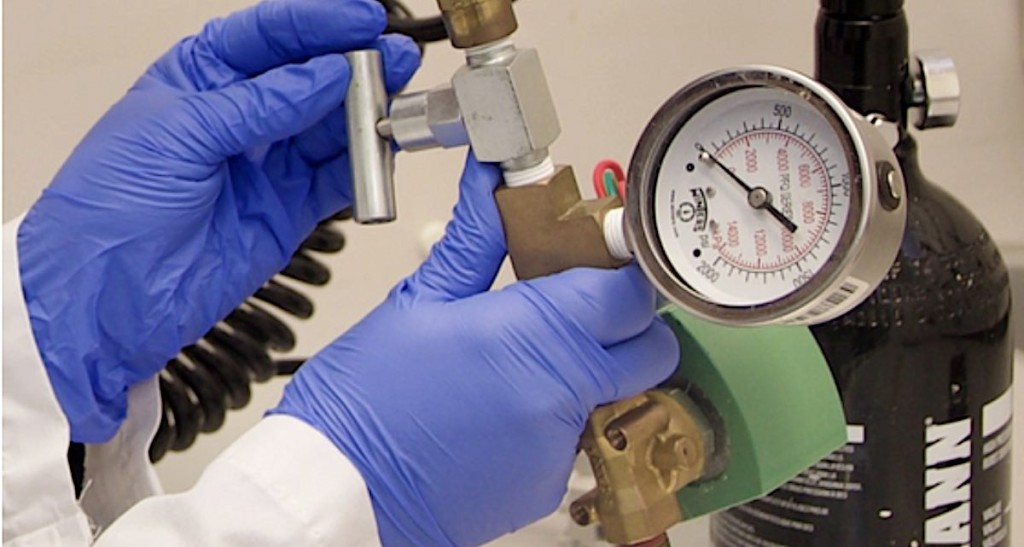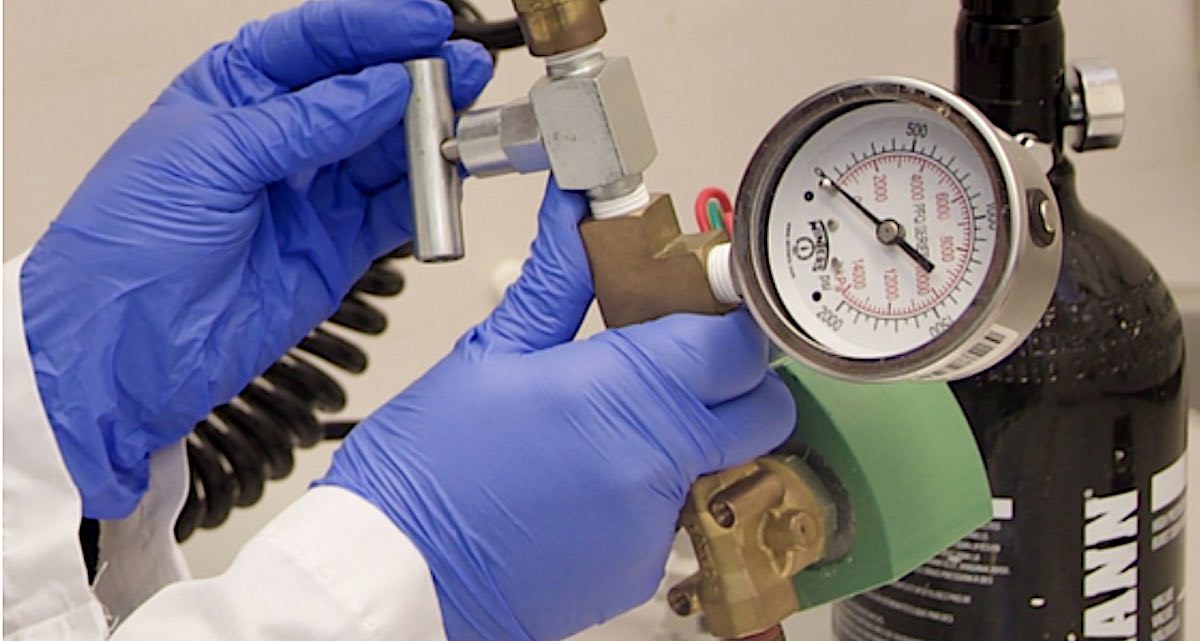
Nobody likes needles, but they’re necessary for delivering many vaccines and biologics into the body. But what if those could be puffed through the skin instead, with just a little pressure, like being hit in the arm with a foam toy?
Today, scientists report steps toward making that a reality. Using powdered vaccines that don’t require refrigeration and a system driven by compressed gas, their “MOF-Jet” could easily deliver therapeutics against cancer and other diseases in a painless and less fear-inducing way.
The idea for the project was formed out of pandemic-induced boredom. The project’s principal investigator, Jeremiah Gassensmith, Ph.D., had ordered inexpensive pieces of a compressed gas-powered jet injection system to mess around with while stuck at home.
Later, after everyone was back on campus, he handed the pieces over to Yalini Wijesundara, a graduate student in the lab, with the instructions, “See what you can do with this.”
Despite looking and sounding like something out of science fiction, jet injectors were in use in the military back in the 1960s, but were discontinued due to them actually being more painful, and often blowing the liquid vaccine back into the face of the administer.
The medical media in Wijesundara’s invention is called a MOF, or metal-organic framework; essentially tiny miny cages that can contain a vaccine powder until it’s safely inside a cell.
These are normally made of gold or tungsten and are extremely expensive. Wijesundara and her team instead found a way to use zeolite.
GIZMOS AND GADGETS: 17-Year-old Wins $150,000 in Science Talent Search for Remarkable Way to Diagnose Pediatric Heart Disease
“We can also store vaccine formulations within it as powders at room temperature, which eliminates the need for the extremely cold temperatures many liquid vaccines require,” said Wijesundara.
According to Gassensmith, the blast from the injector just feels “like you got hit with a Nerf bullet,” and the team found it worked on both mice and onions.
By tinkering with the MOF-Jet, Wijesundara soon realized that cargo release could be tuned by simply changing the injector’s carrier gas.
MORE MEDICAL INNOVATION: Uganda Joins African Nations Using Drones to Deliver Life-Saving Medical Supplies to More Than 22 Million People
“If you shoot it with carbon dioxide, it will release its cargo faster within cells; if you use regular air, it will take four or five days,” she explains. “Once we realized that, it opened up a lot of possibilities,” added Gassensmith.
The researchers will present their results at the spring meeting of the American Chemical Society (ACS).
WATCH the invention in action below…
GOT A FRIEND WHO HATES NEEDLES? Share The Good News…




















